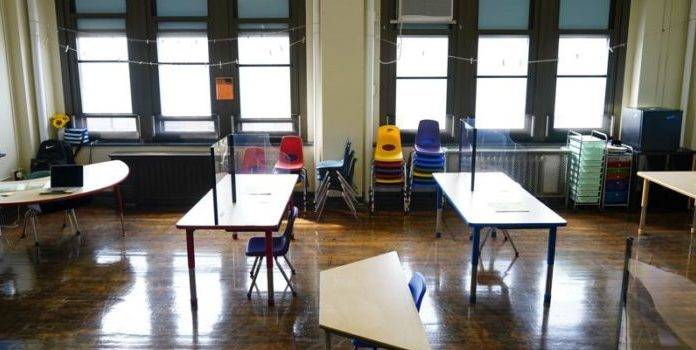(Kerry McDonald, FEE) It’s back-to-school season and that’s prompting concerns about further shortages of medications to treat attention deficit hyperactivity disorder.
Last fall, the US Food and Drug Administration declared a nationwide shortage of Adderall, a popular ADHD drug. That shortage is expected to worsen. According to CNBC: “Many children and young adults with ADHD often take the summer off medication and primarily rely on it during the school year. That could lead to even more demand in the months ahead that may not be met. Historically, prescriptions for ADHD medications increase as the school semester starts around the U.S.”
The CDC estimates that over 6 million children have been diagnosed with ADHD, and 60% of them are medicated for it. If many children don’t need their ADHD medication during summertime and then resume the use of these powerful psychotropic drugs at the start of the school year, that should send alarm bells ringing. Schooling is the problem.
Indeed, as Boston College psychology professor Dr. Peter Gray asserts: “What does it mean to have ADHD? Basically, it means failure to adapt to the conditions of standard schooling.”
In his research of children diagnosed with ADHD who left a conventional classroom for homeschooling and related unconventional learning environments, Gray found that their ADHD characteristics and behaviors ceased to be problematic and that most children no longer needed to be medicated. This was particularly true if these children learned in more self-directed educational environments that intentionally avoided the trappings of traditional schooling.
This topic is so important that I strongly recommend you listen to my podcast conversation today with Dal “Doc” Richardson, who founded BreakOut School in Utah County, Utah specifically for children with ADHD and related diagnoses. Richardson holds a doctorate in pharmacy and worked as a community pharmacist for 20 years before deciding to become an education entrepreneur. He was concerned about children—and especially boys—with ADHD being unable to flourish in a conventional classroom.
“The families that come to BreakOut School, many of them are just at their wits’ end,” said Richardson. “They find that this system has been trying to jam the square peg into that round hole and all they see are splinters occurring.”
Richardson founded BreakOut School in 2019 as an outdoor-based microschool, similar to a “forest school” model, that provides ample opportunities for unfettered movement and play, along with core academics. He has seen extraordinary results in his students—both academically and emotionally.
From an economic perspective, we should be concerned about the shortage of Adderall, which is likely due, at least in part, to various quotas imposed on manufacturers by the US Drug Enforcement Administration that regulates narcotics and controlled substances like Adderall. These shortages would likely not exist in a free market devoid of government meddling.
From an educational perspective, we should be even more concerned about the shortage of Adderall this back-to-school season. This signals that Adderall is being used to equip children to “adapt to the conditions of standard schooling” without questioning whether or not that’s a desirable goal. As Richardson told me, these drugs do work. Kids will conform and perform. But at what cost? What are we taking away from them when we force them to comply with the standard schooling mold?
I always trust parents first, and back them in their decisions regarding what is right for their children. But I hope that more parents who may have children with ADHD characteristics consider that standard schooling may be the real problem.
Fortunately, there are now so many more schooling alternatives for these parents to explore, including BreakOut School, which is a recognized, low-cost private school in Utah that participates in several Utah school choice programs, including the new Utah Fits All Scholarship. This recently-passed universal education savings account program provides each K-12 child in Utah with access to about $8,000 per year to use toward approved educational expenses, including microschools like BreakOut School whose tuition hovers right around that ESA amount. Today, more children have access to standard schooling substitutes than ever before.
Several years ago, I wrote about how Thomas Edison would have been given Adderall today. When he was eight years old, his teacher called him “addled” and by all accounts he was unable to adapt to the conditions of standard schooling. His mother found the “addled” label to be unacceptable. She removed young Thomas from school after only a few weeks and homeschooled him from then on using a largely self-directed approach. “She understood me; she let me follow my bent,” Edison recalled.
Years later, as Edison was securing his place as one of America’s greatest inventors with more than 1,000 US patents—including for the phonograph, the motion picture camera, and the incandescent light bulb—a chemist working in his massive New Jersey laboratory said: “Had Edison been formally schooled, he might not have had the audacity to create such impossible things…”
Today, as millions of children return to school—and some return to potent medications— it’s worth asking: Is standard schooling really worth it? Or, is there something better that will allow each child to follow his or her own bent and create those impossible things?

